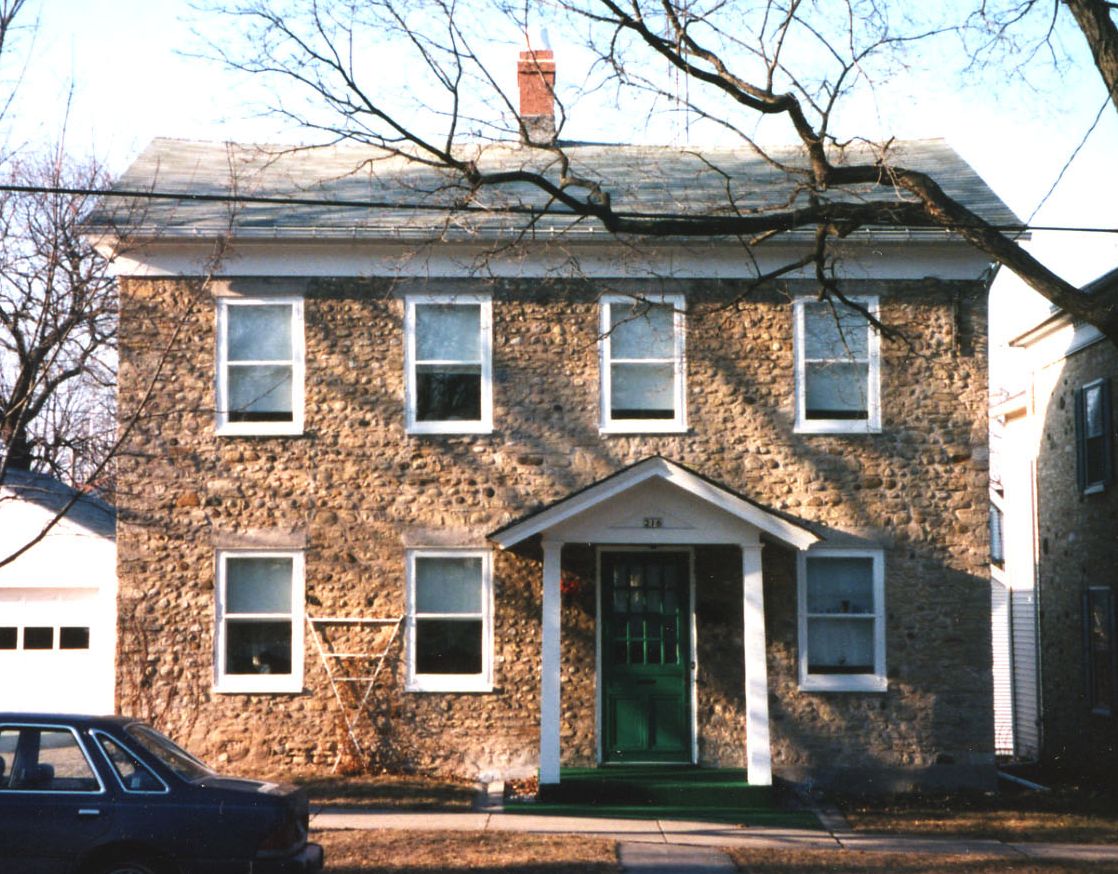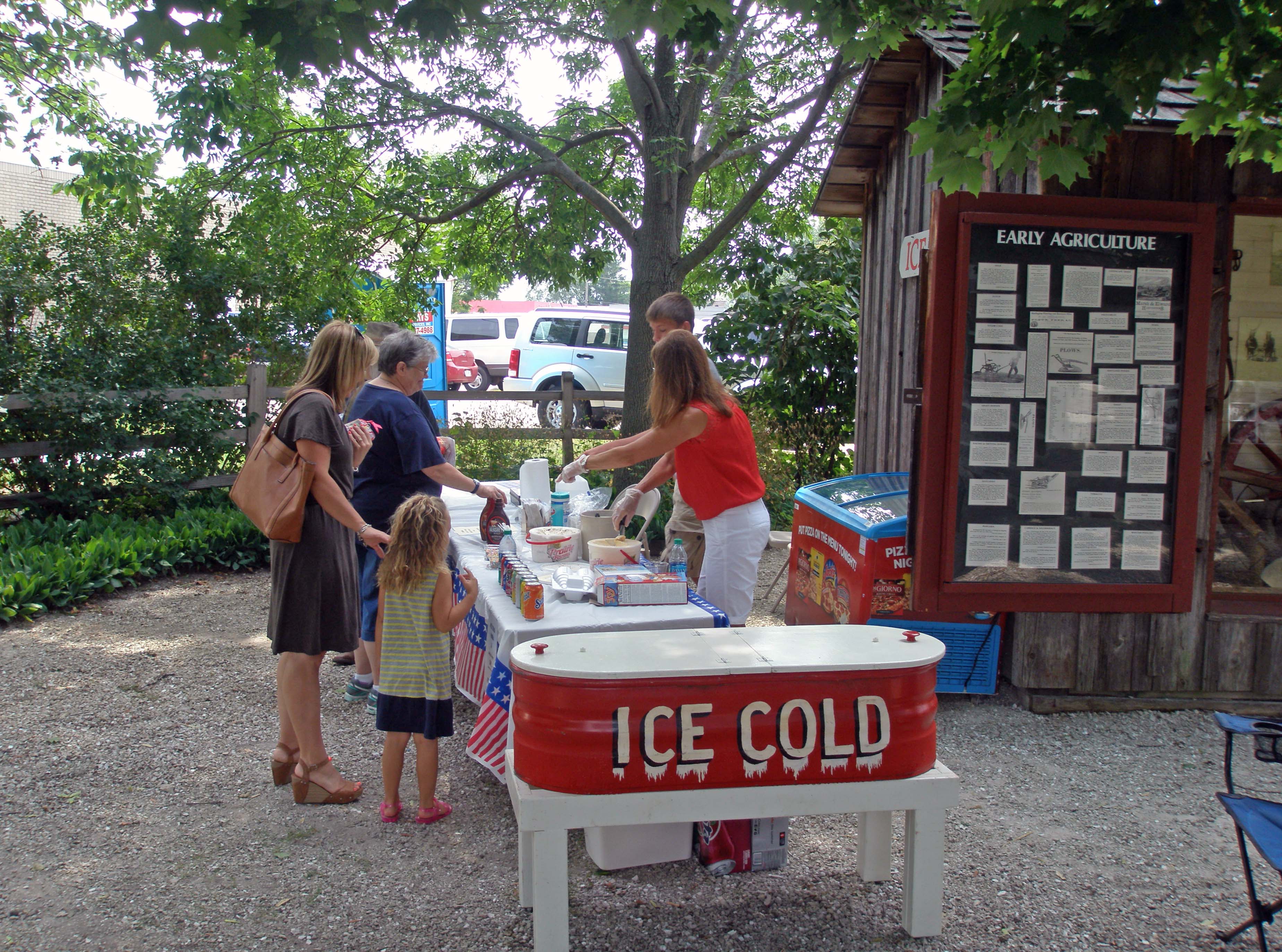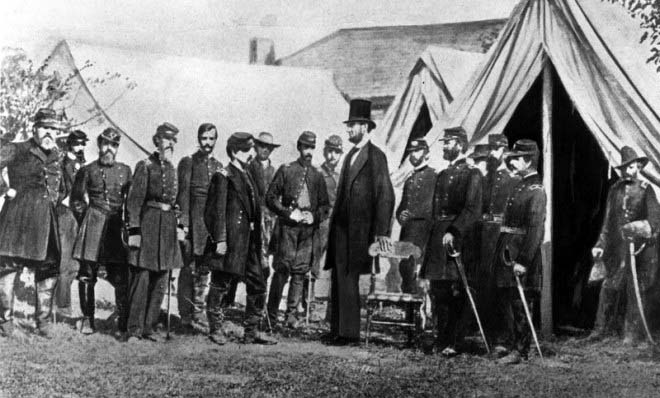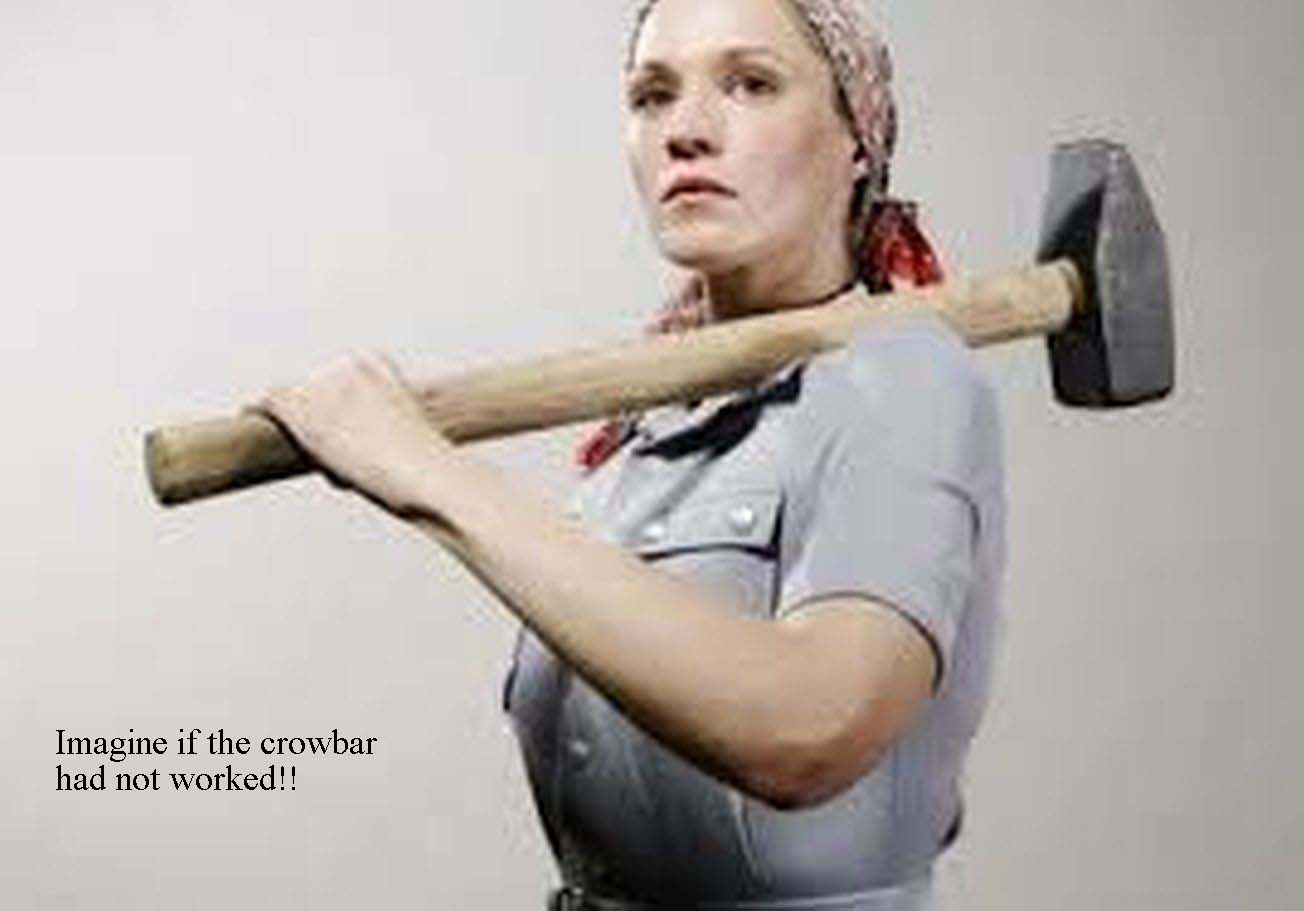Newsletter - September 2014
Burlington Historian

September 2014

Society to Sell Hammiller House
The house, with an adjoining garage (shown at right in 1996), was generously donated to the Society by the late Cyril and Marion (Rhodes) Hammiller’s daughter Ruth in August 2012. Ruth, who grew up in the house, donated it to the Society in honor of her parents, both of whom were long-time Society members.
Since then, the Society has re-roofed the garage, done minor repairs, and paid the monthly and quarterly bills as they have come due. A plan to rent out the garage on a monthly basis, to help pay the bills, was frustrated when the renter failed to meet his commitment.
The house (shown at right in 1996) is one of the three pre-Civil War fieldstone houses on the north side of Jefferson Street on the Hillside. It is located on land that Moses Smith, one of Burlington’s first settlers, acquired in 1839 at the Milwaukee land office. After Smith, who left Burlington in the late 1830s, the property was owned by Pliny and Ephraim Perkins, Joseph and Theresa (Reuschlein) Thering, Phillip and Adolphina (Block) Griebel, Fred Achen, Joseph Eckert, and several Heiligenthals. Old Burlington directories list Andrew Betzig in the house in 1876 and Phillip Griebel there in 1897.
Cyril Hammiller (who died in 1986) and his first wife, Catherine Alvord (who died in 1948), bought the former Mrs. Elizabeth Heiligenthal house in 1939. Cyril’s second wife and widow, Mrs. Marion Hammiller, lived there until her death in 2011 at age 98.
The house has oak beams and the walls are 18 inches thick from cellar to attic. Attached at the rear is a more modern addition.
President’s Message
It seems like summer just started – yet here it’s September. September brings the beautiful Wisconsin colors and what promises to be a great harvest for fresh produce lovers. Every Thursday afternoon this fall, vendors of fresh produce and fruit along with sellers of hot food and snacks will offer their products at the "Farmers Market" in Wehmhoff Square. We also have our famous Pioneer Log Cabin open during market hours, so stop by and view our historic displays of life in Burlington as it was in the early years.
Changes around our city include another apartment complex between the newest Fox River bridge and the railroad tracks. That parcel at one time was occupied by a natural gas plant that was built in 1907 to serve the needs of local industry as an alternative to coal power. Also, the popular Coffee House at Chestnut & Pine, in the building that was once called the Florence Block and then the Wien Block and housed Kessler’s variety store, has plans to expand into the adjacent building as a possible bakery business. That historic building, known as the Schwaller building, housed many ventures, including a music store, ice cream store, dry goods business, a real estate office called the Schwaller Land Company and the Burlington Building and Loan, which was on the second floor.
Don’t forget to get out and take in the great Wisconsin fall weather and the changing colors that help make our area a great place to be.
Dennis Tully
Book Published on History of Brown’s Lake

Society member Carol DeMarco has recently published her first book, "Lake of the Shining Arrow – A History of Brown’s Lake." The book, which includes over 90 vintage photographs, is an interesting, informative, and fun look at the evolution of the lake from the time that the Potowatomi Indians camped on her shores and fished her waters to the lake’s heyday as a summer resort destination for the Chicago crowd.
Sparked by what she read in the legal abstract of her family’s 1898 lake house when she and her husband, Tony, acquired the house in 1976, Carol started collecting information and interviewing long-time lake residents about their memories of the lake.
Using the Lake herself as guide and chief narrator, Carol has 17 people tell their stories about their roles in the lake’s history. Included among the narrators are an Indian chief, a land surveyor, early settlers, resort owners, an ice company entrepreneur, and "cottagers."
The book, which might make a welcome Christmas or birthday gift for former and current area residents, is available for sale at The Coffee Shop at Chestnut and Pine, the Pharmacy Station, and Brown’s Lake Super Stable. The Museum also has a few copies, signed by the author, for sale.
Good Weather for Ice Cream Social

After unseasonably cool weather hampered last year’s Ice Cream Social, Mother Nature decided to cooperate this year. And that made for a successful event. Thanks to all those who patronized the event and especially to those who helped in putting it on. Special appreciation to Gooseberries Market for donating the use of the freezer.
Thanks also to Jackie Heiligenthal and Deborah Schlitz for hosting visitors to Pioneer Cabin.
Marilee Hoffman and Daniel Rummler (partially hidden) dish up ice cream and sodas at the Society's end-of-July Ice Cream Social. Marilee, a Society board member, and Daniel, son of board member Stephanie Rummler, anchored the event.
Burlington Native Was Youngest Union Soldier to Carry Musket in Civil War
William De Steese, the youngest Union soldier to carry a musket during the Civil War, was born in Burlington on April 14, 1850. His father, Levi, a tailor, was a native of Germany. His mother was Elizabeth Williams, a native of Wales. The family is listed in the 1850 census of Burlington, showing them living in or near the downtown area.
When William was an infant, his parents moved to Maxon Mills in Rock County, and when he was nine years old, they moved to Berlin. The family later located on a farm at Lamartine, a few miles west of Fond du Lac.
When the Civil War broke out, the elder De Steese enlisted in Company D, Third Wisconsin Volunteer Infantry, and this inspired his son, who wished to enter the army also. His mother gave her consent after much urging and the boy went into camp with a regiment at Oshkosh as a drummer. But when the regiment was ordered to the front, the officers sent William home.
When he tried again, the recruiting officer told William to crawl back into his cradle. He finally went to Waupun and enlisted on March 17, 1864, at the age of 13 years and 11 months. He was assigned to Company D of Wisconsin’s Thirty-eighth Volunteer Regiment, then at Camp Randall, Madison. This gave him the distinction of being the youngest soldier who carried a musket in the Civil War.
In 1920 the Fond du Lac Reporter interviewed William about his war experiences, one of which was an "interview" with President Lincoln In referring to his acquaintance with Lincoln, Mr. De Steese said:
"After enlisting at Waupun, at the age of 13, I was sent to Washington. We spent a week in encampment just east of the capitol, where the Library of Congress building is now located. Then crossing into Virginia, we were placed on the plantation of General Robert E. Lee (now Arlington National Cemetery), three miles from Alexandria. There we received arms and equipment and spent two weeks in drill.
"Later, while camped in Washington near the Baltimore and Ohio depot, four or five of us boys, for want of something better to do, sneaked out of camp and went to see the President. At the White House, we were stopped by a guard. Lincoln, who was watching us, came out on the porch and asked us in.
"I, as spokesman of the party, told the President that we came to see ‘Old Abe.’ He shook hands with all of us and told us he was sorry to see young boys like us obliged to go into the army to fight. He assumed a most serious countenance during the interview, but we boys laughed about the war and informed him that we enjoyed life in the army.
"Lincoln was assassinated on the anniversary of my birthday (April 14, 1865). We received word of his death when we were going toward Georgia. . . .
"On July 7, 1865, our troops were marched back into Washington to guard prisoners. We were ordered to the arsenal prison, where, while I was on guard over a section of the cells, I met Father Boucher, confessor of Mrs. Mary Surratt, who, with her son and a man by the name of Payne, were being held in connection with the conspiracy which led to the death of Lincoln. We had been given strict orders not to allow anyone to see the prisoners, and I had difficulty in getting Father Boucher into the cell.
“Many years later, when making funeral arrangements for a G.A.R. (Grand Army of the Republic) member at St. Louis church in Fond du Lac, I called at the home of the pastor, and after a lengthy conversation discovered that Father Boucher, whom I had seen frequently on the streets of Fond du Lac and who was pastor of the local church, was the same priest who had visited the cell of Mrs. Surratt.”
Mr. De Steese was a member of the guard that surrounded the scaffold at the prison on July 8 and witnessed the hanging of Mrs. Surratt and her three accomplices.
On returning from war, William attended the district school and high school in Fond du Lac and then entered the employ of the Chicago, Milwaukee and St. Paul railroad (which served Burlington for many years). He was later actively engaged in the insurance and real estate business in Fond du Lac.
During his time with the railroad, Mr. De Steese occasionally visited Burlington, the place of his birth.

De Steese was a member of the guard that witnessed the hanging of Mrs. Surratt and her three accomplices in the plot to assassinate President Lincoln.
House Beautiful??
Contributed by Priscilla Crowley
I have talked often about growing up in Lyons and how much fun we had. I know I have mentioned that our house was a very old farmhouse. It was not a really large home but it accommodated us all pretty well. However, it was not what anyone would have called a "house beautiful." We moved to Lyons on my 6th birthday and I can remember very vividly how upset Mom was and how hard she tried not to show it. We went from a fairly modern though not luxurious house in Burlington, close to shopping and downtown, to a house that lacked running water, was a little (really a lot) on the shabby side and it was in the middle of small town America where the most excitement you could have was a traffic jam of tractors, wagons and pickup trucks at the feed mill with farmers all coming to town to stock up at the same time.
I believe that at one time the house had probably been a very gracious and inviting home, probably very upscale for its time. I remember that the wallpaper in the living room was a dark brown with some sort of figure in it and there were French doors leading into the dining room which held a built-in china cupboard with stained glass flowers on the doors for decoration. The outside had a quite large yard and there were a number of flowers – everything from daffodils, tulips and peonies to lily of the valley, bleeding heart bushes, ferns and lilac bushes. Also on the corners of the lot, at the entrance to the driveway and at the end of the sidewalk leading to the house were huge stone pillars. Like I said, it appears that it was a very gracious and well-appointed home in its day.
When things started to look up a bit for Mom and Dad, they turned their attention to re-decorating some of the rooms. They started with the kitchen – I can remember them poring over catalogs, looking at different wallpapers and tile for the walls and linoleum for the floor. When they finally agreed on what was to go where, I can still see them sitting at the kitchen table deciding which project to tackle first. They decided to put up the "tile" on the walls. The tile was actually more like linoleum but it was made to look like tiles, it was yellow with black trim. Mom was the chief assistant in all projects and we little darlings were relegated to the outside world, told not wander too far and not to kill each other or anyone else’s kids and to make sure we didn’t cause any problems for anyone especially our parents. Bottom line – they didn’t want our help. That didn’t, however, stop us from peeking in the window or door when we thought we could get away with it. Dad was very particular and it’s a good thing because I don’t think this particular tile was the easiest stuff to work with and the glue they had to use to attach it to the wall smelled terrible and looked like grey mud. The measuring part went ok and pieces all fit but they had problems getting rid of the air bubbles – it took a lot of plain speaking by Dad and a few pieces were taken off and re-glued but finally that part of the job was done.
The next project was wallpapering. Again Mom was the assistant and Dad was the chief. Of course, Mom picked out wallpaper that had to be matched, even more fun. I do remember Dad talking very forcefully to each piece as he put it on the wall and a lot of discussion about how this "cheap, doggone wallpaper stretches when wet and shrinks as it dries." He got so frustrated at one point that he ripped one piece off of the wall when it wouldn’t match up, balled it up and threw it at the floor, unfortunately, it didn’t hit the floor first, it landed on Mom’s head. That was an extremely interesting conversation between the two of them. It spite of all the trials and tribulations, Mom and Dad did finish the kitchen, they didn’t divorce, they eventually talked to each other again without snarling and they continued to wallpaper together for many years to come.
One of the best stories about Mom and Dad refurbishing and re-doing happened after they moved from Lyons and eventually bought a house in Burlington. It was an old-fashioned house but very nice, a warm kind of a home. Mom and Dad talked about re-doing the kitchen and dining room. The kitchen was old-fashioned with the old tall cupboards and no counter space. Mom longed for a nice modern kitchen and Dad told her that one of these days he would start the remodel. Well Mom was patient to a point and then one day she must have figured she had gone past that point and was tired of waiting.
When Dad came home he had quite a surprise waiting for him. Mom had taken a crow bar and attacked one of the walls between the kitchen and the dining room – she knocked off all of the plaster and all that was left was the old-fashioned lath boards. She was very neat and tidy, she swept everything up and deposited all the junk in the trash and then sat down and waited for Dad to come home from work. And home he came. I don’t know exactly what words passed between them but I do know that work commenced on the remodel almost immediately. It wasn’t long before Mom was proudly showing off her brand new kitchen and dining room. When my husband found out that Mom had attacked the kitchen wall, he gave me one of those looks only husbands can hand out and told me he was sure that he would never catch me with a crowbar in my hands attacking any of the walls in our house. I can’t honestly say that I never would have done that. Mom was my hero, she may not have used the most diplomatic way to achieve her goals but she got the job done. Who can find fault with that?
knocked off all of the plaster and all that was left was the old-fashioned lath boards. She was very neat and tidy, she swept everything up and deposited all the junk in the trash and then sat down and waited for Dad to come home from work. And home he came. I don’t know exactly what words passed between them but I do know that work commenced on the remodel almost immediately. It wasn’t long before Mom was proudly showing off her brand new kitchen and dining room. When my husband found out that Mom had attacked the kitchen wall, he gave me one of those looks only husbands can hand out and told me he was sure that he would never catch me with a crowbar in my hands attacking any of the walls in our house. I can’t honestly say that I never would have done that. Mom was my hero, she may not have used the most diplomatic way to achieve her goals but she got the job done. Who can find fault with that?
I always have to laugh when I think of my mother swinging a crowbar to get her point across. It just goes to show you never know what you can accomplish until you try.
50 Years Ago . . .
• The Nestle Co. selected Burlington as the site for a new chocolate factory; took option on Duehring farm acreage; and in August 1964 broke ground.
• The Library moved into the former post office building in 2½ hours; 380 residents carried books.
• Announcement made that Pinecrest Shopping Center would be built.
• The Soo Line announced it would discontinue passenger service.
